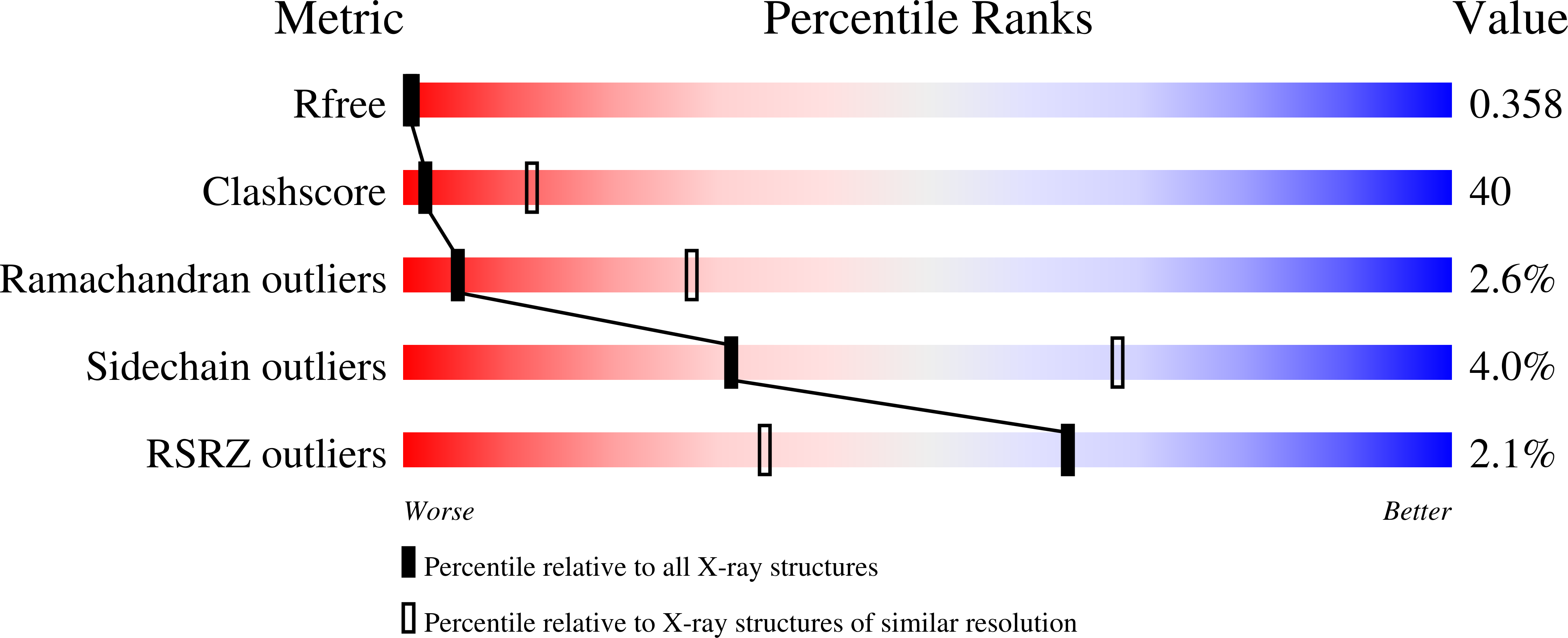
Deposition Date
2007-04-09
Release Date
2008-01-22
Last Version Date
2023-08-30
Entry Detail
PDB ID:
2PG8
Keywords:
Title:
Crystal structure of R254K mutanat of DpgC with bound substrate analog
Biological Source:
Source Organism:
Streptomyces toyocaensis (Taxon ID: 55952)
Host Organism:
Method Details:
Experimental Method:
Resolution:
3.00 Å
R-Value Free:
0.36
R-Value Work:
0.33
Space Group:
P 21 21 2


